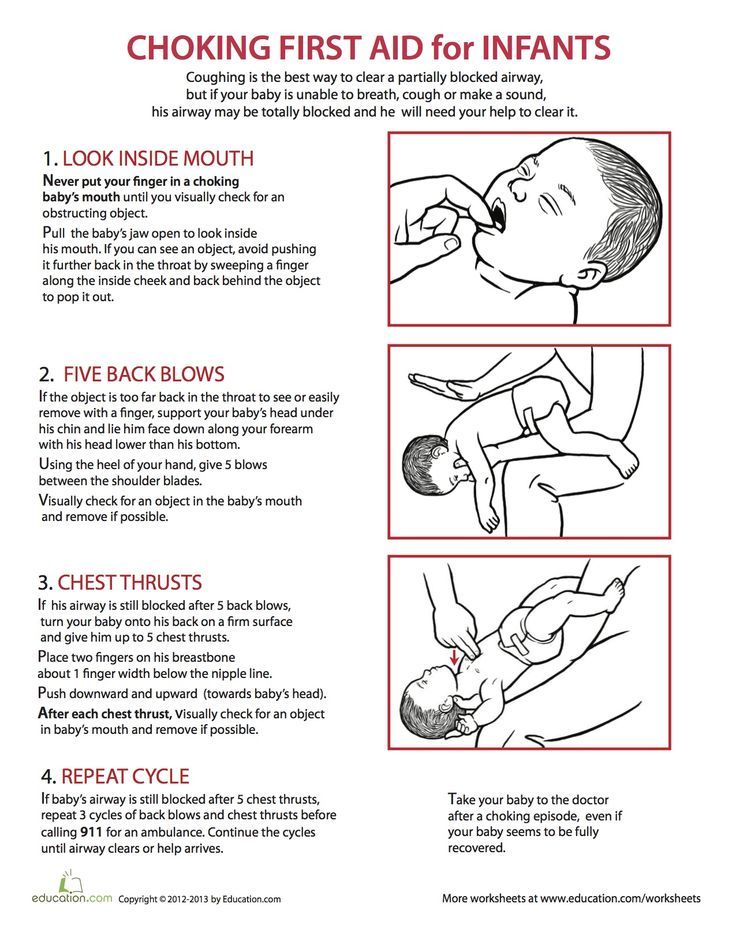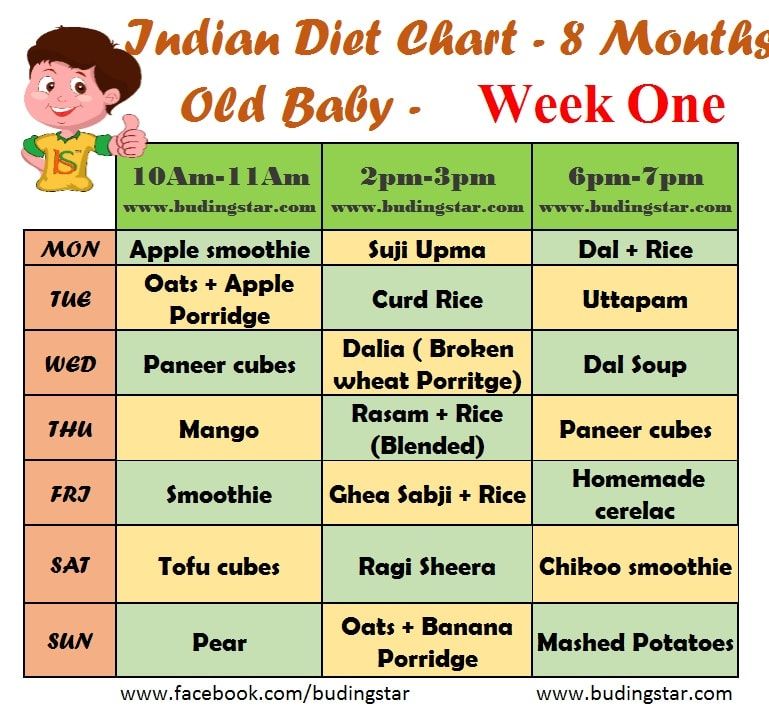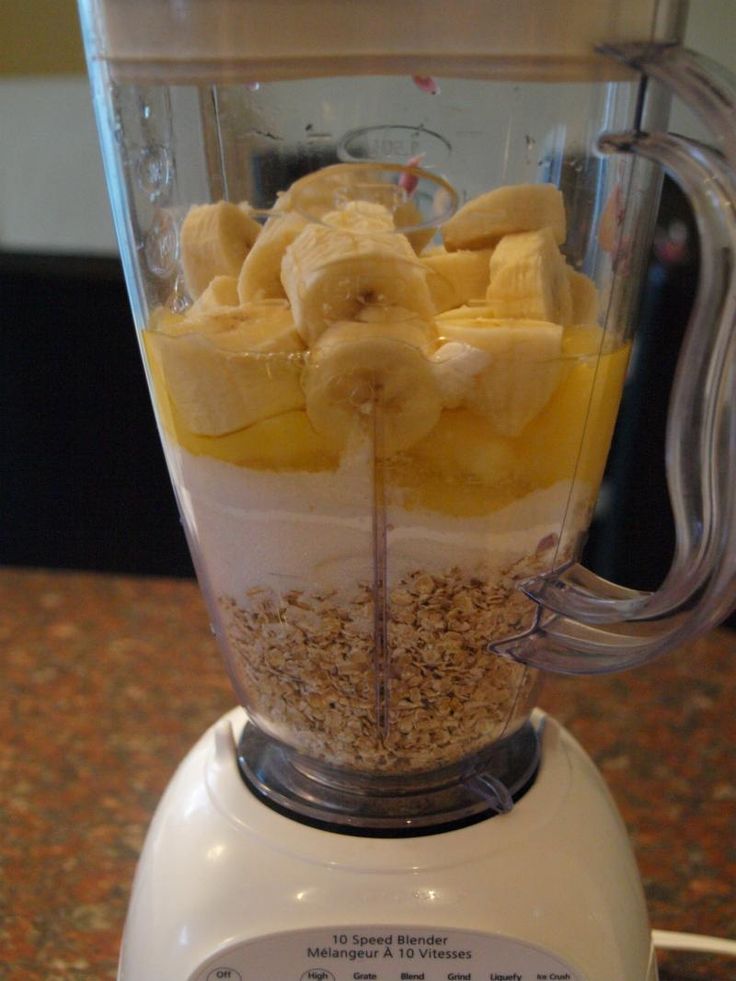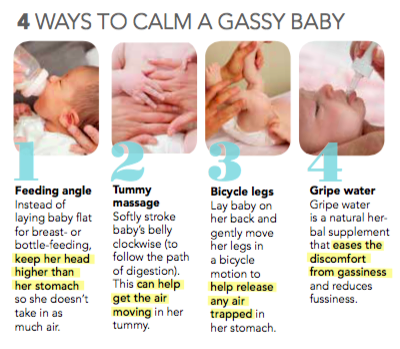When to feed baby oatmeal
When Can My Baby Have Oatmeal?
Oatmeal is a great early food for baby, but when can you start feeding baby oatmeal? Learn the answer here, plus ways to introduce oatmeal to baby.
When can baby start eating oatmeal?
Baby oatmeal is a healthy and safe first food --- baby can start eating it as soon as they're ready for solids. But when is baby ready to start their solid food journey, and munch on oatmeal for the first time?
Typically, a baby is ready to start solids between 4 and 6 months of age.
But baby won't automatically be ready for solids at a certain age or weight.
Rather, readiness for solids is a developmental milestone. This means baby will be ready to eat oatmeal once they show certain development cues or signs.
What types of cues do you need to look out for?
A baby is ready for solids when they:
- Have good control of the head and neck
- Can hold the head and neck steady for longer amounts of time
- Sit upright on their own, with minimal to no support
- Opens their mouth or leans forward when you hold food in front of them
- Show an interest in the family's foods during family mealtimes
- They may look longingly at food, open their mouth, or even reach for the food and try to grasp at it
- Have a tongue reflex that no longer pushes food out of the mouth.
- Instead, the tongue reflex brings food to the back of their mouth and swallows.
Watch this video with Nurse Dani to learn how you can tell when your baby is ready to eat solid food:
Baby Oatmeal vs. Regular Oatmeal
What makes baby oatmeal different from regular oatmeal?
And do you need to choose an oatmeal that’s specially designed for babies? Or can you feed baby regular oatmeal (steel-cut or rolled oats)?
While some babies can handle the texture of regular oatmeal, many babies benefit from baby oatmeal, especially when they are first starting solids.
Baby oatmeal is finely blended, so it’s thinner and smoother than regular oatmeal. This is easier for babies to handle while they’re still learning to munch and chew.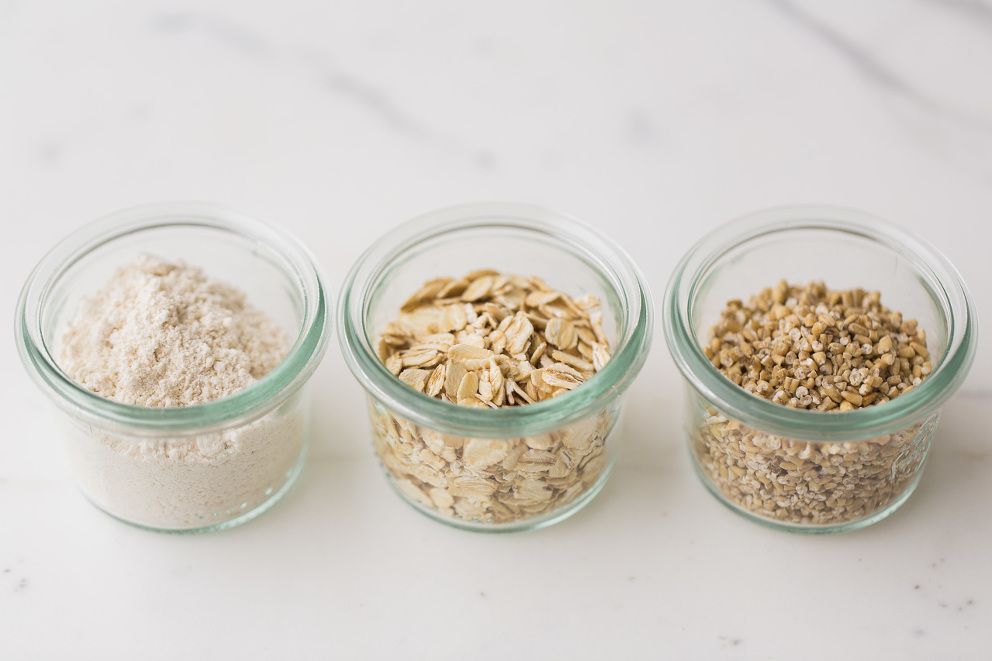
If you decide to use baby oatmeal, you have a few options.
- You can choose a prepared baby oatmeal --- one that’s already specially made for babies’ early food needs.
- You could also blend steel-cut or rolled oats in a food processor before cooking them.
- Or, you can puree cooked steel-cut oats or rolled oats in a food processor with water, to make them smoother.
However you decide to serve baby oatmeal, be sure to choose oats with no sugar added! According to the U.S. Department of Agriculture (USDA) Dietary Guidelines, babies under two years of age shouldn’t consume foods with added sugar.
And remember --- as baby gets more experience with solids, they need exposure to a variety of textures and flavors.
- So, as baby builds munching and chewing skills, consider adding some regular oatmeal into baby’s diet.
- You can also add small pieces of chopped baby-safe fruits into oatmeal. (Keep reading for more suggestions on how to serve baby oatmeal!)
- And be sure to feed baby a variety of other healthy foods with many other textures and flavors.
 After all, a diverse, healthy diet helps them build lifelong nutritious eating habits, and learn crucial munching and chewing skills.
After all, a diverse, healthy diet helps them build lifelong nutritious eating habits, and learn crucial munching and chewing skills.
Why is baby oatmeal such a beneficial first food?
Oats are packed with vitamins, minerals, carbohydrates, and fibers. They also contain more proteins and healthy fats than most other grains.
Some key nutrients in oatmeal include:
- Multiple B vitamins
- Iron
- Magnesium
- Calcium
- Zinc
- Manganese
- Phosphorous
As baby grows and starts to eat more solids (and consumes less breastmilk or formula), eating foods with a healthy balance of nutrients becomes even more crucial.
Introducing baby to oatmeal early will help baby choose and enjoy a food with all these healthy benefits, throughout the rest of their life.
Plus, the fibers in oatmeal help keep baby from getting constipated, and the structure of oatmeal means it's easy for baby to digest.
Remember, though: When you start solids like oatmeal, breastmilk or formula should remain baby’s primary nutrition source until they turn one year of age. Even with all its nutritional benefits, oatmeal is no substitute for breastmilk or formula.
Even with all its nutritional benefits, oatmeal is no substitute for breastmilk or formula.
How to prepare baby oatmeal?
You can easily prepare baby oatmeal using breast milk or formula. Giving baby oatmeal prepared this way means that baby will enjoy a familiar taste along with the oats' new flavor and texture. So, it's a great introductory food for even the pickiest babies.
And with baby oatmeal, the possibilities are endless, especially as baby continues to try more solid foods.
- Baby oatmeal prepared with breastmilk, formula or cow's milk is a healthy, yummy option on its own.
- But you can also top or mix oatmeal with practically any softened, chopped fruit.
- Try oatmeal with chopped peaches, chopped mango, mashed banana pieces, cooked and chopped apples, chopped strawberries, mashed raspberries, or mashed blueberries.
- Mix oatmeal with plain yogurt, chia seeds, or both.
- Spice things up with a bit of cinnamon, or another spice.

- You can even get adventurous and mix oatmeal with veggies, like avocado, pureed carrots, or chopped butternut squash!
If you’re mixing oatmeal with breastmilk or formula, you’ll need to do this in a bowl.
Follow the instructions on the oatmeal, or try this common recipe: 1 to 2 Tbsp. baby oatmeal mixed with about 4 to 5 Tbsp. breast milk or formula.
Do NOT mix and feed oatmeal in baby’s bottle of breastmilk or formula. This can pose a choking hazard.
What if I’m doing baby-led weaning?
Even though baby oatmeal is a smoother first food, it can still fit into solids introduction if you’re doing baby-led weaning.
- You can preload oatmeal on a spoon, then let baby grab the spoon and self-feed when they are ready.
- Or, you can prepare oatmeal so it gets thicker, and present it to baby in clumps for them to pick up with their hands.
-------------------------------
All health-related content on this website is for informational purposes only and does not create a doctor-patient relationship. Always seek the advice of your own pediatrician in connection with any questions regarding your baby’s health.
Always seek the advice of your own pediatrician in connection with any questions regarding your baby’s health.
These statements have not been evaluated by the Food and Drug Administration. Products are not intended to diagnose, treat, cure or prevent any disease.
See the FDA Peanut Allergy Qualified Health Claim at the bottom of our homepage.
Feeding Your Baby the First 12 Months - Pediatric Nutrition - Golisano Children's Hospital
Golisano Children's Hospital / / Feeding During the First 12 Months
| Foods/Age | 0-4 Months | 4-6 Months | 6-8 Months | 8-10 Months | 10-12 Months |
|---|---|---|---|---|---|
| Breast milk or iron-fortified formula | 5-10 feedings per day; 16-32 ounces | 4-7 feedings per day; 24-40 ounces | 3-5 feedings per day; 24-31 ounces | 3-4 feedings per day; 16-32 ounces start cup skills | 3-4 feedings per day with meals, use cup; 16-24 ounces |
| Grains, breads and cereals | NONE |
Iron-fortified infant cereal (rice, oatmeal, barley). Mix 2-3 teaspoons with formula or breast milk. Feed with spoon. Mix 2-3 teaspoons with formula or breast milk. Feed with spoon. |
Single grain iron fortified infant cereals. 3-9 Tablespoons per day divided into 2 meals per day. | Iron fortified infant cereals. Toast, bagel, crackers, teething biscuits. | Infant or cooked cereals. Unsweetened cereals. Bread. Rice, mashed potatoes, macaroni. |
| Fruit juices | NONE | Infant juice. NO OJ or tomato. ONLY 2-4 ounces/day. | Infant juice. Try cup. Only 4-6 oz daily | All 100% juice, Vitamin C enriched. OJ, tomato are OK. Limit to 6 oz daily. | All 100% juices. Vitamin C enriched. 4-8 oz per day. |
| Vegetables | NONE | NONE |
Strained/mashed, cooked vegetables. If giving corn use strained. 1/2-1 jar. 1/4-1/2 cup per day. If giving corn use strained. 1/2-1 jar. 1/4-1/2 cup per day. |
Cooked mashed vegetables. Junior vegetables. | Cooked vegetables. Raw veg like cucumbers or tomatoes. |
| Fruits | NONE | NONE | Strained/mashed fruits (fresh/cooked: mashed up banana or homemade applesauce). 1 jar to 1/2 cup per day. | Peeled soft fruit wedges, bananas, peaches, pears, oranges, apples. Unsweetened can fruit packed in water/juice. NO grapes. | Any fresh fruit, peeled/seeded. Unsweetened can fruit packed in water/juice. Cut grapes. |
| Protein Foods | NONE | NONE | NONE |
Strained meats/ground lean meat, fish, poultry.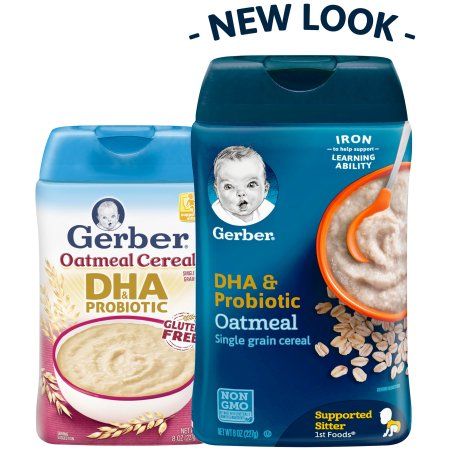 Egg yolk, cooked dried beans. Egg yolk, cooked dried beans. |
Small, tender pieces of lean meat, poultry, fish. Whole eggs, cooked dried beans. |
When to introduce oatmeal into complementary foods for babies
— Ekaterina Borisovna, is it possible to give oatmeal for the first complementary foods and how useful is it for a child?
- Oatmeal is a gluten cereal, so it is not suitable for the first feeding . But in the second half of life - depending on when you started cereal complementary foods - the baby can try this wonderful product in all respects.
Benefits of oatmeal for children
- Rich in protein, vegetable fats, is an excellent source of slow carbohydrates, energizes the baby for a long time, creates a feeling of satiety.
- The amino acids that make up this porridge are involved in protein synthesis, building muscle fibers and the formation of protective antibodies.
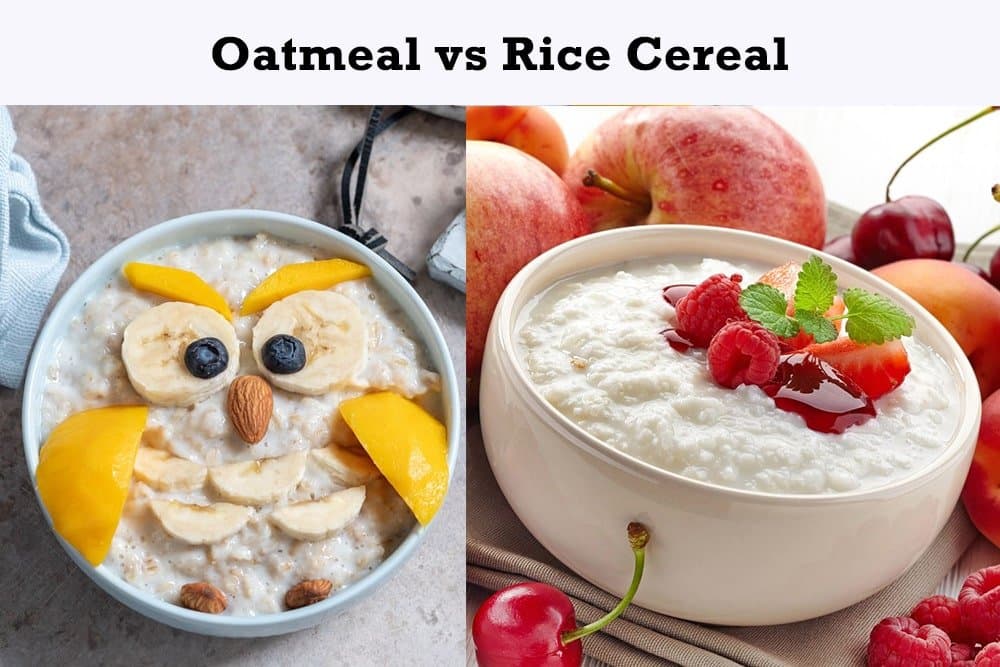
- Useful fiber has a protective effect on the mucous membrane of the gastrointestinal tract, and also stimulates the bowels.
Oatmeal naturally combines a variety of vitamins B, E, PP, as well as potassium, magnesium, phosphorus, iron, copper, iodine, zinc and other micronutrients.
- B vitamins are involved in metabolic processes, including those in nerve cells.
- Calcium and phosphorus help strengthen bones and teeth.
- Iodine is essential for normal thyroid function.
- Potassium normalizes the functioning of the cardiovascular system.
— Pediatricians do not recommend ordinary oatmeal for complementary foods. What is the reason for this?
- Adult oatmeal is made from whole oatmeal that has undergone minimal mechanical processing. Such grain contains more useful substances, but absolutely is not suitable for baby food . The emerging enzyme system of the baby is not yet ready to break down the coarse structure of oatmeal.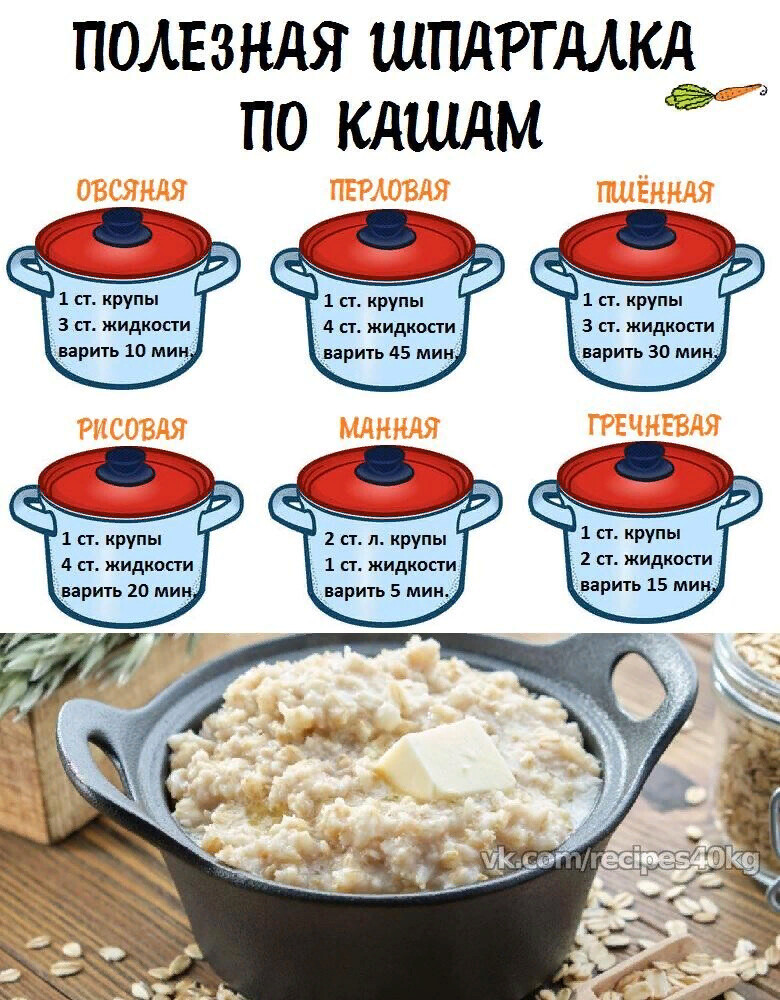 And the use of porridge from it, most likely, will cause disturbances in the work of the immature gastrointestinal tract. Therefore, oatmeal from an adult diet is not suitable for feeding children under one year old.
And the use of porridge from it, most likely, will cause disturbances in the work of the immature gastrointestinal tract. Therefore, oatmeal from an adult diet is not suitable for feeding children under one year old.
Oatmeal in complementary foods: what and how much to give
- What should be oatmeal for a child under one year old?
— For baby food, fragrant oatmeal is used, obtained by grinding oat kernels, which have undergone a special heat treatment. It retains the maximum amount of useful substances, and its delicate structure has a protective effect on the mucous membrane of the digestive tract.
Types of baby oatmeal
— Dairy-free mono porridge is suitable for the first feeding with oatmeal and feeding babies with allergies. Toddlers who are not allergic to cow's milk proteins can try milk oatmeal with goat's or cow's milk. Do not forget that goat's milk is closer in structure to breast milk and is easier to digest, because when it is curdled in the stomach, a tender loose clot is formed, which is well broken down by enzymes. It is also less allergenic, so goat's milk cereals are suitable for feeding children at risk of developing an allergy to cow's milk protein .
It is also less allergenic, so goat's milk cereals are suitable for feeding children at risk of developing an allergy to cow's milk protein .
Fruits, vitamin-mineral complexes, probiotics can be added to porridge to improve taste, as well as to enrich it with fiber and useful micronutrients. This normalizes digestion and helps the baby better adapt to a new type of product. In addition, nutritional supplements provide a complete diet.
— When to introduce oatmeal into baby food?
- Oatmeal - complementary foods for a child over 6 months of age, it is introduced only after acquaintance with gluten-free cereals - rice, corn, buckwheat. If complementary foods are not started before six months, this does not mean that you can give oatmeal for the first complementary foods. First of all, you still need gluten-free cereals, you can’t use gluten-containing oatmeal. Let me remind you that gluten is a protein that is difficult to digest, and its introduction too early can provoke disturbances in the gastrointestinal tract.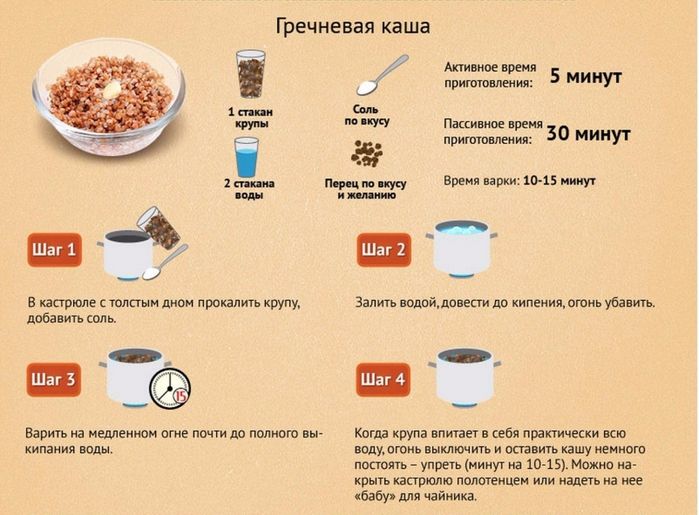
See also
- about gluten-free cereals for the first meal
— How much oatmeal should a child be given?
- Oatmeal is given in accordance with age norms. The first complementary food is a few teaspoons, gradually the amount of porridge is brought to the desired volume.
Medium serving size of oatmeal:
- 6-7 months 100-150g;
- 7-8 months - 180 g;
- 9-12 months - 200 g;
All figures are arbitrary: the baby can eat a little less, a little more, it's not critical. But we must remember that oatmeal contains a lot of phytic acid, which is able to form insoluble compounds with calcium and remove it from the body. Therefore, you can offer oatmeal to your baby no more than two or three times a week and only once a day.
Allergy to porridge
— Ekaterina Borisovna, why do some children refuse oatmeal?
- Toddlers usually enjoy eating oatmeal. But there are exceptions to all rules. If there is a refusal of oatmeal, first of all it is worth evaluating the reaction of the child to this type of complementary foods. Perhaps he is worried about digestive problems after eating it, which means that the body is not yet ready to break down gluten.
But there are exceptions to all rules. If there is a refusal of oatmeal, first of all it is worth evaluating the reaction of the child to this type of complementary foods. Perhaps he is worried about digestive problems after eating it, which means that the body is not yet ready to break down gluten.
If everything is in order with the tummy, the child may simply not like the taste of porridge . What you can try to do, provided that oatmeal is well tolerated:
- change porridge from dairy-free to dairy;
- replace cow's milk porridge with more tender and tasty goat's milk porridge;
- offer porridge with fruit and berry additives.
From such a variety, the baby will surely be able to choose a dish that will suit his taste. If this does not help, never force-feed a child . You should postpone the introduction of oatmeal for a couple of weeks or a month. After a while, the baby will be able to re-evaluate the taste of this wonderful food.
— Food allergies are not uncommon. Can a child be allergic to oatmeal?
- Allergy to oats is extremely rare. Skin rashes and stool disorders with the introduction of oatmeal are most likely associated with gluten intolerance. In this case, the following are possible:
- a transient state - it is caused by age-related immaturity of the enzyme system;
- true allergy is a congenital condition called celiac disease.
If signs of allergy appear, you should pause for two to three weeks and again offer oatmeal complementary foods to the baby. If the symptoms return and occur when eating other foods containing gluten (wheat, barley porridge), it is important to contact a pediatrician to clarify the diagnosis.
But not always when eating oatmeal, the child reacts to gluten. The cause of the allergy may be the milk in its composition. This happens in pediatric practice. Let's say the baby has never tried porridge or mixtures based on cow's milk before, and the mother followed a dairy-free diet. In this case, he already has a certain probability of developing an allergy to milk protein. And as soon as the baby's diet is supplemented with a highly allergenic cow's milk protein, he begins to react with skin rashes and stool changes.
In this case, he already has a certain probability of developing an allergy to milk protein. And as soon as the baby's diet is supplemented with a highly allergenic cow's milk protein, he begins to react with skin rashes and stool changes.
Buy oatmeal for feeding or cook yourself
- It has already been noted that regular oatmeal is undesirable for an infant . But some parents turn a blind eye to this. Continuing the conversation, we will once again touch on home-made cereals and cereals of industrial production. What's better?
— For children of the first year of life, it is preferable to use ready-made baby cereals of industrial production. There are several reasons for this.
— How to cook oatmeal for complementary foods: what should parents remember?
— For making porridge at home, high quality flakes are used, previously ground in a blender to the state of flour. Consumption - 5 g (approximately 1 tsp) per 100 ml of water. Oatmeal is poured into boiling water and boiled, stirring constantly, for 7-10 minutes.
Oatmeal is poured into boiling water and boiled, stirring constantly, for 7-10 minutes.
To improve the palatability of porridge , you can add a little breast milk or the usual milk formula, butter. Fruit or fruit and berry puree, fresh fruits and berries can be tasted after a year. Honey, due to its highly allergenic properties, should not be given to babies.
— Consider instant cereal for kids. Which oatmeal should you choose?
- First of all, you should pay attention to the manufacturer. Choose large manufacturers that have proven themselves in the baby food market.
Next, we study the packaging. It should look neat, be free of dents and damage. High-quality applied paint will not wear off at the slightest friction.
Information about the composition of porridge must be clearly written in an understandable language. In addition to oatmeal, in the list of components you can find cow or goat milk, fruit and vegetable or fruit and berry supplements, vitamins with minerals, probiotic flora.
Baby food porridge may not contain:
- salt;
- modified starch;
- artificial colors;
- genetically modified foods;
- fragrances;
- flavor enhancers.
— How does MAMAKO ® baby cereal help digestion?
— The manufacturer's line includes children's oatmeal with goat's milk in two varieties — milk oatmeal and milky oatmeal with prunes, which perfectly diversify the diet with new taste sensations.
Both cereals contain 32% healthy goat's milk, which is perfectly digestible and has a positive effect on digestion. In the stomach, it curdles into a soft clot, and its small fat globules and fatty acids are easily broken down in the baby's body.
Also, these cereals are enriched with the best helpers of the child's body:
- Ca+Fe+I - an indispensable complex for the prevention of rickets, iron and iodine deficiency;
- fat-soluble vitamins A, D, E, K - are involved in cell metabolism, enzyme systems, redox processes;
- vitamins of group B - responsible for the formation of the nervous system, take part in energy metabolism, muscle work;
- vitamin C - the main antioxidant;
- niacin, folic and pantothenic acids, biotin and other useful substances.
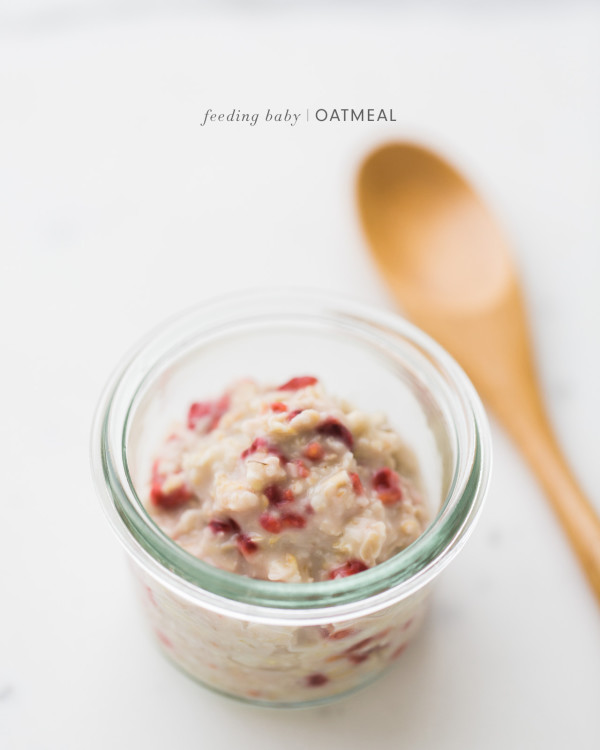
Of all the variety of baby food, I recommend my patients to opt for goat milk cereals from MAMAKO ® . These oatmeal porridges have a delicate taste, an optimally balanced composition, are well tolerated and cause allergic reactions to a lesser extent in babies predisposed to them.
Oatmeal is an indispensable product in the nutrition of a young child. It is an excellent source of fiber and complex carbohydrates and contains the most important nutrients for your baby. Oatmeal not only normalizes bowel function, but also has a mild enveloping effect on the stomach and facilitates digestion.
For the first feeding, it is better to use ready-made cereals. Healthy babies can buy cereals both in cow's and goat's milk. To feed babies prone to functional disorders of the digestive tract, as well as those at risk of developing allergic conditions, it is preferable to use oatmeal with goat's milk. They cause digestive disorders to a lesser extent and are less allergenic.
* Breast milk is the best food for babies. WHO recommends exclusive breastfeeding for the first 6 months of a child's life and continued breastfeeding after complementary foods are introduced until the age of 2 years. Before introducing new products into the baby's diet, you should consult with a specialist. The material is for informational purposes and cannot replace the advice of a healthcare professional. For nutrition of children from 6+ months. The product is certified.
at what age to give, how much. How to cook oatmeal for children, recipe
Contents
Hercules and other types of oatmeal are considered much healthier than other cereals. After all, this culture contains a lot of trace elements, vitamins and is well digested. Therefore, most parents try to introduce porridge from oats into complementary foods as early as possible. But pediatricians advise to act more carefully. After all, this porridge, like other products, has its own contraindications, and its abuse can lead to a violation of the baby's health.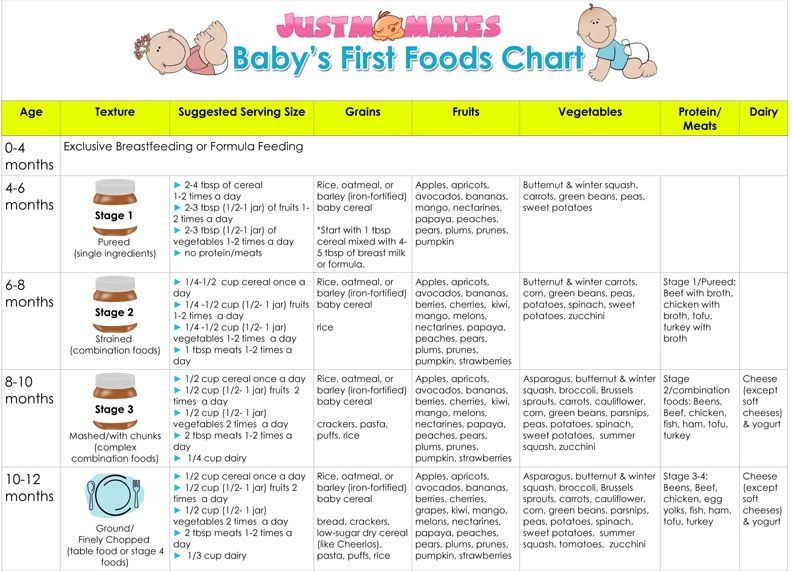
Benefits of oatmeal for children
Its grains contain a record content of folic acid, thiamine, riboflavin and other B vitamins. Oatmeal helps to restore hemoglobin levels, strengthen the bones of the skeleton, connective tissue, visual apparatus, nervous system. It supports the work of endocrine organs, helps to eliminate toxins from the body, improves blood composition.
Regular use of oatmeal provides the cells with essential nutrients, improves the condition of the skin and mucous membranes, eliminates their irritation. The delicate structure of the product avoids inflammatory reactions from the digestive tract. And the fiber of cereals helps the intestines and perfectly relieves it of constipation. In addition, oats are high in calories. Due to the high content of protein and fats, it quickly restores physical strength, provides satiety for a long time.
Despite the saturation of carbohydrates, the glycemic index of oatmeal is low, it is allowed to be eaten by children with impaired glucose metabolism. Oats can harm the body with gluten intolerance. Its grains contain a lot. Do not use this porridge with persistent diarrhea.
Oats can harm the body with gluten intolerance. Its grains contain a lot. Do not use this porridge with persistent diarrhea.
Oatmeal for children with diabetes is contraindicated due to the presence of starch in it.
Oatmeal for children: at what age to introduce complementary foods
Babies up to 7-8 months often cause allergies to gluten, as insufficiently necessary enzymes are produced in their intestines. Therefore, it is recommended to give your child oatmeal no earlier than at 9-10 months. Until this period (up to 6 months), the menu should be expanded with gluten-free cereals: rice or buckwheat.
How to cook oatmeal for a child
Choose from the whole variety of oatmeal groats sold, it is desirable to use ordinary long-cooked oatmeal. It is more troublesome with it, but this product contains the whole set of useful substances, and there are not many of them in refined ready-made food. Whole grains of oats for babies are not advisable to use.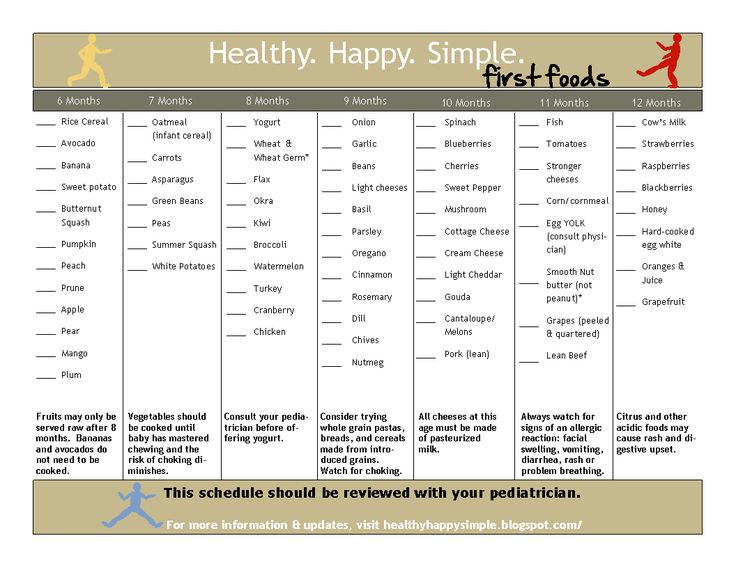 They cook for a very long time, losing a lot of vitamins in the water.
They cook for a very long time, losing a lot of vitamins in the water.
General recommendations
For children under 1 year of age, grind the cereal in a coffee grinder, and cook the porridge in water without sugar or salt. It is allowed to use oatmeal - oatmeal. You can add a little butter or kefir to the finished dish. For those who have teeth, you can cook crushed or whole flakes to train your chewing skill.
First serving - no more than 2 tsp. At the beginning of complementary foods, oatmeal does not need to be combined with other new foods. It is better to give it in the morning in order to take action in time for allergies. If the child does not have stool disorder, colic, skin rash and itching during the day, oatmeal is allowed for the child. More than 2 times a week to feed the baby with this product should not be in order to avoid a lack of calcium. Phytic acid in the composition of cereals prevents its absorption
Milk-based oatmeal is allowed for children over 1 year of age. It can be cooked in milk or a mixture of it with water, fruit purees can be added to the dish: banana or pear. You can sweeten oatmeal with a little sugar, honey, or berries.
It can be cooked in milk or a mixture of it with water, fruit purees can be added to the dish: banana or pear. You can sweeten oatmeal with a little sugar, honey, or berries.
How much oatmeal should I give my child?
- At 1-2 years old, the size of one medium serving of porridge is about 100 g.
- Children 2.5-3 years - about 150 g.
- At 4–5 years, a single dose can be increased to 200–250 g.
Oatmeal with milk for a child, recipe
Ingredients for 1 serving:
- 3 tablespoons of oatmeal;
- 100 ml milk;
- 100 ml filtered water;
- 0.5 teaspoon sugar;
- 0.5 teaspoon butter.
Oatmeal for children, recipe step by step
- Grind oatmeal in a coffee grinder.
- Pour milk and water into a small saucepan, heat.
- Pour in the ground flakes and start to cook over low heat, stirring constantly.


